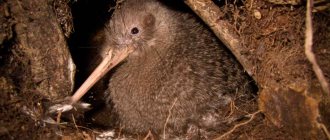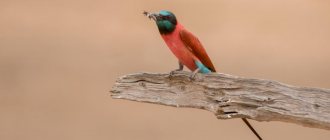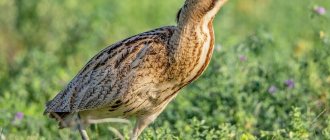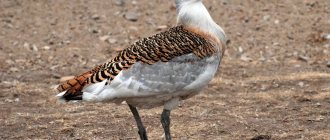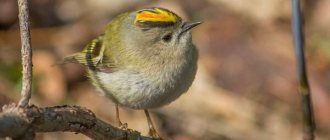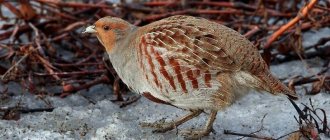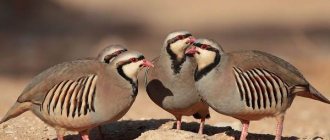| Latin name: | Pinicola |
| English name: | To be confirmed |
| Kingdom: | Animals |
| Type: | Chordata |
| Class: | Birds |
| Squad: | Passeriformes |
| Family: | Finches |
| Genus: | Shchury |
| Body length: | 25 cm |
| Wing length: | 10.5 cm |
| Wingspan: | 35-37 cm |
| Weight: | 50-60 g |
Description of the bird
The schur is a medium-sized songbird of the finch family. Adults reach 25 cm in length, with a wingspan of 35-37 cm, and a body weight of 50 to 60 g.
The birds are distinguished by a dense build, a short, thick, downward-curved beak and a long tail. The thick plumage of the common bee-eater is very reminiscent of bullfinches: the male's head, chest and back are painted in a bright crimson color, the belly is gray, the tail and wings are brown-brown with white and black stripes. Unlike the handsome males, female bee-eaters and young animals look rather modest - instead of crimson-red, they are colored yellow-brown.
What does it eat?
— Advertising —
Shuras are granivorous birds and mainly feed on seeds of deciduous and coniferous trees, their buds and shoots, and berries. They also add a small amount of insects to their diet, especially in winter (beetles, their larvae, butterflies in suspended animation). Chicks also need animal food, so their parents feed them insects.
Shchurs are very fond of eating juniper and rowan berries, and in the eastern regions - pine nuts.
Shchurov habitat
The habitat of the shura is large. It covers the coniferous forests of North America, Europe and Asia. The bee-eater is considered a dendrophilous species, that is, it lives in the crowns of trees. In mountainous areas it inhabits thickets of dwarf cedar, juniper and subalpine crooked forests.
Shchur, along with other taiga representatives of the order Passeriformes (waxwing, Siberian tit, etc.), prefers wild forests located far from human settlements. It has been established that the boundaries of its habitat reach the northernmost limits of woody vegetation.
Where does it live?
— Advertising —
Shchurs are typical forest dwellers; they live over a vast territory of Asia, Europe and America. To live, these birds choose forests and copses, deciduous and mixed, but always near rivers or other bodies of water, as they are very fond of water treatments.
Bee-eaters do not like to move on the ground, so tall trees are reliable protection for their nesting and everyday life.
Lifestyle and habitat
Shuras in the middle zone appear only in the autumn and winter periods, when, escaping from the cold, they move from the northern regions to the south. At such times they can be seen in parks, gardens and on private plots. There they feast on preserved but frozen rowan berries, which they prefer to all other treats.
The favorite habitat of such birds in the summer is northern coniferous forests. These creatures have the ability to take root even in unfavorable, cold regions, as long as at least some kind of woody vegetation can still exist there.
In warm times, they prefer wild areas not inhabited by people. But they can appear near human habitation only in search of food, if there is a lack of it. And since they are rarely seen, few have heard of such feathered creatures, and they are considered rare.
The shura bird lives mainly in the crowns of huge trees, and there, at a height, it feels at ease. There, such birds move with ease, performing almost acrobatic pirouettes and taking bizarre poses on the branches.
But on earth they turn out to be very clumsy, because this is not their element. But they love water, moreover, they tend to settle not far from large, fresh bodies of water, because they love to swim. Such birds rarely settle in one place for a long time.
Somewhere they can suddenly appear and also disappear in an instant, which is why they are known as wandering birds. And although they rarely approach areas inhabited by people, they are practically not afraid of humans, like other animals. These creatures are not at all shy, but on the contrary, they are extremely trusting.
Shchur, as already mentioned, can be migratory, but they are often in no hurry to move or even do not go on winter trips to warm countries at all. Here everything depends not even on the vicissitudes of the climate, but on the abundance of food in a certain area in a certain year.
If we look at the shchurs who have settled in the Russian northwestern territories, then from the Kola Peninsula and from the outskirts of Murmansk they begin to gather to the south already in October, soon moving to the lower reaches of the Volga and to other regions similar in climate. And they leave the Leningrad region in November, sometimes even later. And most often they return to their nesting sites around March.
Migratory or wintering
Among the shchur there are both migratory, nomadic and sedentary populations. In each specific region, the migratory behavior of the bee-eaters depends on climatic conditions and the availability of food. In cold winters, pike perch can move south of their usual habitats, but they do not fly far.
Bird couples
Shuras plunge into bird love in late spring. March does not actually appear as a month of wedding trills, unless it brings exceptionally warm weather.
Shchurs - males, “dressed” in their best crimson frock coat, begin to fly around the females with beautiful songs. The female behaves quietly, carefully and carefully choosing her constant companion.
The mated couple is in a hurry to arrange their home before the onset of summer, and the female here successfully seizes the lead, organizing the home independently according to her preferences. An amazing fact is the choice of location: according to the observations of ornithologists, it almost always becomes a tall coniferous tree.
The nest is a twisted bowl lined with soft contents from the inside. The female places the cup as far as possible from the trunk and carefully camouflages it from predators. The depth of the bowl is deep, which eliminates the possibility of defenseless cubs falling out of the shelter.
Gray-blue eggs with black speckles, in a maximum number of six pieces, are incubated by the female for two weeks. The female does not fly away from the nest, waiting for food from her partner.
The hatched chicks have grayish fur and mature within three weeks. After their passage, they try to spread their wings for the first time. Until the three-week mark, the female refuses to leave her shelter, protecting and warming her cubs.
The lifespan of healthy individuals is quite long and can reach twelve years.
Kinds
The genus of bee-eater includes two species: common and rhododendron bee-eater, which are identical in plumage color.
The Rhododendron bee-eater differs from its relative in its smaller size (up to 20 cm in length) and distribution area. This songbird is native to China, Tibet, Burma, Bhutan and Nepal. The species got its name because of its favorite habitats - forest edges with thickets of rhododendron and juniper.
Nesting
Schur - a bird, a photo of which can be found in the article, creates a pair in early spring. At this time, the period of mating begins. Energetic and active males loudly whistle a melodic, iridescent song, thus attracting females. 3-6 days after mating, nest construction begins. Only the female takes part in it. The chicks hatch in early June.
As a rule, nests are located at an average height (2-5 m above the ground) in the forks of the main trunk or side branches. For construction, the bird uses plant material (branches, grass) and less often wool or fluff. A characteristic feature of the nests is thin twigs sticking out from the outside in different directions. The cladding is most often missing. The nests have a flattened shape - shallow and somewhat sloppy and unstable from destruction.
The Schur bird lays medium-sized eggs 24-26 mm long, the color is bluish with numerous dark-brown spots. As a rule, the masonry consists of 3-4 pieces. Only the female incubates, the duration of the period is 12-14 days. The chicks begin to fly at the age of 15-16 days.
Keeping at home
Bird lovers often keep the bee-eater in captivity and value this species for its beautiful plumage and melodious voice. Their only drawback is that in captivity, beetles do not reproduce well.
If they do form a pair, then the birds must be placed in a spacious enclosure and a lot of building material for the nest (twigs, blades of grass, fluff) must be left. In one clutch, the female shura has 3-5 small blue eggs, which she incubates for about 2 weeks. Then the parents feed the chicks for 13-14 days.
For the pike-perch, you will need a spacious cage with perches and two containers of water - one for drinking, and the second for bathing, since the birds are very fond of water treatments.
What to feed?
As a granivorous bird, the gar will need grain mixtures, buds and shoots of deciduous and coniferous trees, pieces of vegetables and fruits, blueberries, rowan berries, and juniper. You can also add grated egg and pieces of boiled meat to the diet.
You can pamper your pet with nuts - hazelnuts, peanuts, walnuts and pine nuts. And in order for the bird not to lose its bright color, it is periodically fed with special mineral and vitamin complexes.
Reproduction and lifespan
Shchuras begin to think about procreation in May. And it is at this time that they choose a mate to give birth to chicks. Female shura birds to build nests and arrange the family home ; they do everything themselves.
At this stage, the males only delight their ears with their selfless, euphonious songs, emitting melodic trills. Indeed, these concerts are given only by males. And their hardworking friends are not famous for such talents.
Mother schuras also incubate eggs, of which there are usually up to five in a clutch. But fathers take care of their chosen ones, protect their peace and do not let them die of hunger. The eggs of such birds are interesting in color; they are blue and decorated with specks.
After two weeks of incubation, after the chicks appear, the married couples begin to feed them. This continues for another three weeks, after which the young animals become independent.
And their parents, in some cases, still have time to produce a second clutch and raise new chicks before the onset of cold weather. In the wild, such birds live no more than 12 years. The schur in the photo makes it possible to better imagine the appearance of these winged creatures.
Interesting Facts
- Shchurs are popularly called “Finnish parrots” or “Finnish roosters” because of their bright colors.
- Shchurs love to swim, and even in winter they find open reservoirs for this, and at home, in addition to a drinking bowl, it is imperative to arrange a place for them to swim.
- Female bee-gar build a nest on their own and do not allow the male to participate in this process. Only females take care of the chicks.
- The favorite delicacy of shuras, like bullfinches, is rowan. That is why these birds are so often confused when they are seen on snow-covered rowan bushes in winter.
Bird's voice
The schur is a songbird. Its trills are beautiful and for its discoverers they resembled the whistle “sch-u-u-u-u-r”, which became its name on Russian soil (in the science of ornithology, the sciat is called Pinicola enucleator). Some experts even compare the sounds made by the bird's larynx with the sounds of the piccola flute, the finest-sounding instrument.
Schur loves to sing in winter. His vocal cords are strong enough to produce the finest melodies even on severely frosty days. It is mainly males who sing. Their trills especially do not stop during the mating season, where the males do not stop talking for a second, circling around the females they like, choosing them based on the loudest singing.
